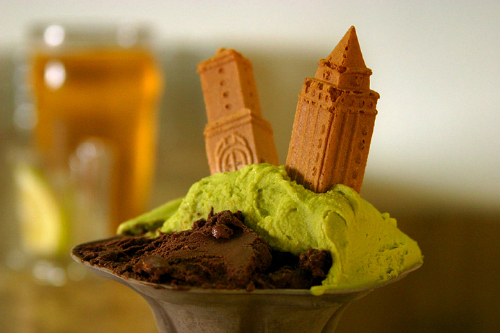They say it isn’t over until the fat lady sings, the final whistle blows or the ringside bell rings, but sweet-toothed gastronomes say a meal doesn’t end until dessert.
Of the three courses in a posh meal, the only one that matters is the last one. Soup is a non-starter and the main is just a warm up for the true main event: dessert, pudding, afters or sweets. Whatever you call it, it’s the best bit of the meal.Most of us spend the preceding two courses craving cake and pining for pastry, desperate to devour a decadent dish. Frankly, it’s a triumph of human will that so many of us are able to politely sit through boring rounds of gravy, meat and potatoes.
One day there will be a social revolution, in which menus are burnt, tables overturned, and soup splattered rioters demand their basic right to eat cheesecake for all three courses. Fancy tablecloths will be torn up into flags daubed with Vive La Rhubarb Crumble!
Until this glorious day, we should all celebrate the deliciously diverse range of the world’s desserts. Take a moment to sample a sticky toffee pudding, bite into some baklava and give galub jamun a go. So grab a spoon and join us for a delicious serving of the world’s tastiest treats.
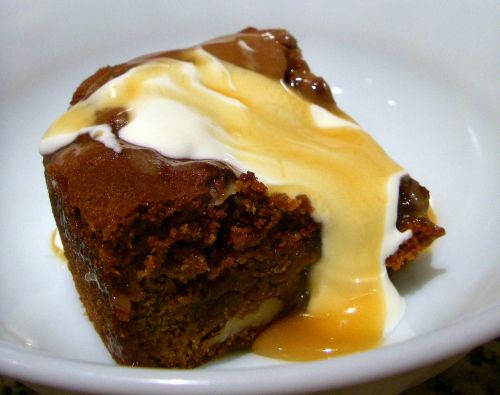
© Chalk and Cheese
This is a proudly British dish, unapologetically calling a pudding a pudding, not a dessert. The name is a triumph of no-nonsense straightforward honesty, just what you’d expect from something hailing from England’s north.
It is indeed sticky, it tastes of toffee and it’s served for ‘pudding’; what more to do you need to know? The dish was first described in a recipe book by Patricia Martin, a Lancashire lass who ran a country hotel. The recipe was adapted and adopted by another hotel, in the picturesque Lake District in the 1970s, and became an instant ‘modern classic’.
The moist, date-packed sponge cake is steamed for soft fluffiness and doused in toffee-flavoured sauce. Already packed with sugar, the dish is usually eaten with ice cream or the most English of accompaniments, custard.
Almost as ubiquitous as the light, continuous English rain known as drizzle, sticky toffee pudding can be found in Michelin-starred restaurants, on pub menus, in tins and chasing down Britain’s famous Sunday Roasts.
It’s almost a shame to have to mention that Britain’s iconic dessert is probably Canadian in origin. Mrs Martin’s original recipe was inspired by a recipe given to her by Canadian fighter pilots in the Second World War.
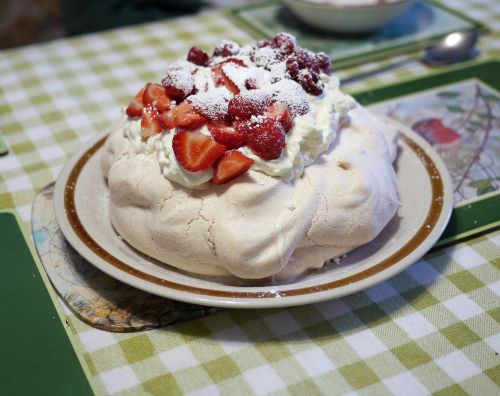
© Brett Jordan
The Pavlova has caused quite a palaver over the years, with both Australia and New Zealand laying fierce claim to this creamy meringue dish.
With all the animosity of an All Blacks Vs. Wallabies rugby match, Kiwis and Aussies will argue all day long about the true home of the Pavlova. It seems odd that these two macho nations should make it a matter of national pride to secure ownership of a dessert named for a Russian ballet dancer.
The story goes that the dish was created in the 1920’s to honour the prima ballerina’s tour of both countries. Kiwis claim that Pavlova stayed at a hotel in Wellington on her visit and the chef there invented the sweet treat in honour of her visit. Aussies argue that recipes for a dish of the same name were printed long before the Wellington claim… even if that was for a multi-coloured jelly rather than a meringue dish.
The argument is almost as tasty as the gooey pudding, with a book published that lists 667 different recipes for different Pavlova dishes. However it started out, it now has a hard-and-fast formula.
A crisp, light meringue with a gooey centre, all topped with whipped cream and garnished with seasonal fruit. ‘Pav’ is an essential part of any Antipodean Christmas but is enjoyed year-round, as is the endless argument about its origins.

© Aaron Logan
Italian cuisine is famous the world over, with spaghetti, cannelloni, risotto and pizza being hungrily adopted by discerning foodies around the world. Chicago and New York argue about their pizza’s pedigree whilst humbly acknowledging Napoli’s undisputed claim. But another oft-imitated dish is probably the most widely enjoyed of Italy’s exports.
Gelato dates back to the 16th century, when Florentine Bernardo Buontalenti served up a scoop at the royal court of Caterina dei Medici. Luckily for Bernardo, the malicious Medicis loved his frozen foodstuff, making it an instant hit in high society.
Nowadays, gelato and its imitator, ice cream, can be found all over the globe. But the original is still the best, thanks to its use of milk rather than cream, making for a lower fat content and a much richer flavour.
The colourful, richly flavoured frozen dish is perfect on its own and a cracking compliment to any other dessert.
No roam around Rome or trundle around Turin would be complete without a coneful of gorgeous gelato.
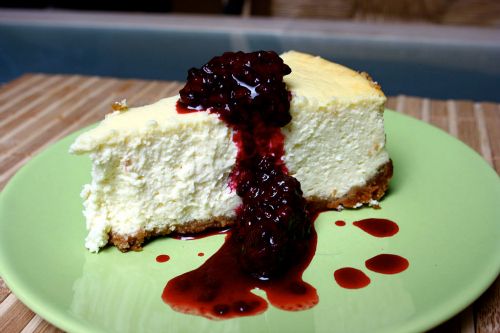
© sabotrax
As proudly American as a flag-waving cowboy riding a Harley Davidson up the Statue of Liberty, apple pie has become a byword for national pride. But this dish isn’t actually “as American as apple pie.”
The dish appears in Chaucer’s Canterbury Tales and in Dutch artwork that’s 150 years older than the USA. So forget about apple pie: cheesecake is the true star-spangled banner of desserts.
So what if Ancient Greek physician Aegimus wrote a book of cheesecake recipes in the 5th Century BC? Or England’s Richard II chowed down on medieval cheesecake? It was a New Yorker who finally perfected the dish.
William Lawrence stumbled across a way to make ‘unripened cheese’; a heavy, creamy goo that we know and love as cream cheese. Armed with his new discovery, Lawrence set about slathering it on cookie crumbs and sprinkling the cake with sugar and berries.
This method lent itself to industrial production and quickly ‘New York style’ cheesecake became the cheesecake. Easily flavoured with fruit, chocolate or nuts, the cheesecake is versatile enough to be everybody’s favourite.
The t-shirt logos might say “I love New York”, but practically the entire world loves New York Style cheesecake.
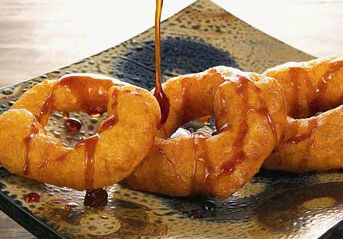
© Antox00
Peru has found the ultimate way to make vegetables delicious. Picarones might look like onion rings, but they are actually a form of doughnut made from squash and sweet potatoes.
The delicacies are sweet and spicy, crispy and chewy. Best served hot and swimming in syrup, expert picaron makers show off their skills by throwing rings of the mixture into hot oil using just one hand.
With roots in Spanish colonial times, picarones were probably developed as a cost-effective alternative to buñelos, a wheat-based doughnut. Even though they were born as a cheap alternative, picarones have come to be one of South America’s favourites.
The vegetable ingredients are boiled and mashed before being mixed with yeast, eggs, salt and flour. Mixed into a smooth stretchy dough, this is left to rise whilst the syrup is prepared from molasses, sugar, orange, lemon and lime.
Here the knack comes in: with wet hands and a flick of the wrist, experienced chefs grab the sticky dough and fling it into boiling oil, miraculously creating the iconic ring in the process.
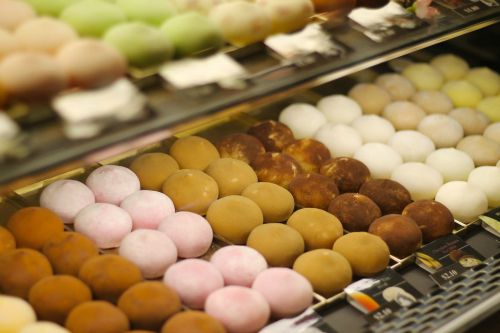
© LWYang
Like so much of Japanese culture, a great deal of ceremony surrounds the preparation of mochi.
Made from pounding rice grains into a fine paste, mochi preparation was once dictated by the Mochitsuki ceremony. The rice is soaked overnight, and in the morning two workers ground it down in a choreographed partnership.
One slams down a heavy mallet whilst another turns the bowl and continually wets the mixture. The process takes coordination and practice, as mistakes can lead to broken fingers, or worse, coarse Mochi. The sticky white mass is then rolled in balls and steamed.
Mochi balls are usually stuffed with sweetened bean paste or wrapped around an entire strawberry; the most indulgent version is filled with ice cream.
Mochi also makes appearances in savoury dishes, popping up in soups and stews like a delicate dumpling. Kinako mocha is traditionally made on New Year’s Day to bring luck for the coming year.
As tasty as this dish must be, there is a sour note to accompany it. Every year more than 100 people are hospitalised in Tokyo after choking on the sticky sweet.
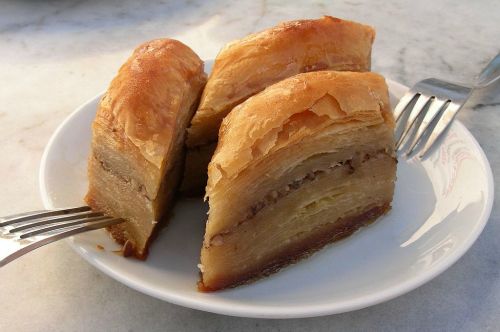
© Kultigin
Baklava goes perfectly with Turkey’s famous coffee, making it the perfect way to end a large meal and a great snack to go with a cup of joe.
With roots in an ancient Assyrian dish of dried fruit wrapped in pastry, baklava became a mainstay of the Ottoman Empire and variations of the recipe can be found all over its former territory.
Turkish baklava uses layers and layers of thin, flaky pastry folded dozens of times to enclose a filling of fruit and nuts, all soaked in sweet, sticky syrup. Pistachios, walnuts, rosewater and spices make up alternate versions of this classic.
Baklava was more than just a tasty treat: sultans would present trays of the dish to elite Janissary soldiers. The imperial kitchens at the Tokapki Palace churned out vast spreads of the pastries to accompany royal banquets.
Thankfully for us humble peasants, Baklava has been allowed to spread across class boundaries and around the globe.
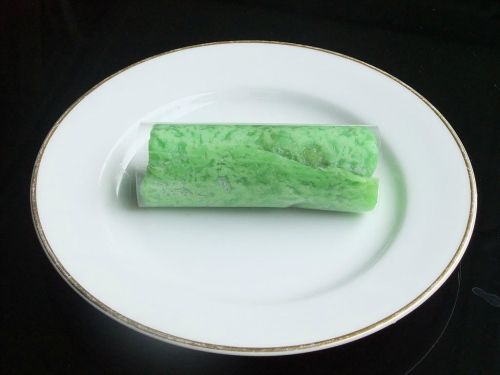
© Midori
Literally translated as ‘omelette’, this green dessert mixes egg with coconut milk and palm sugar.
The batter is made from flour, salt, eggs and coconut milk and mixed with green food colouring; the mixture is then cooked in a frying pan with margarine. The flat disc is then folded round a filling of coconut, sugar and cinnamon, and rolled tight.
Dadar gulung is found across Indonesia, but is especially popular in the marketplaces of Java. The ‘omelette’ is regularly enjoyed as a snack in its own right, but also forms the basis of more complex dishes in high class restaurants.
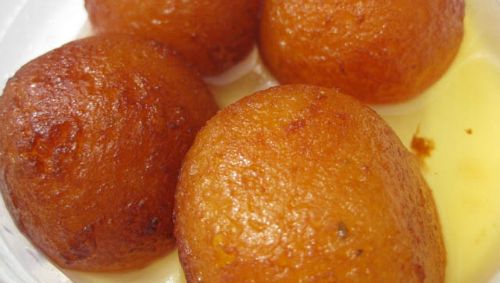
© Jason Lam
Gulab Jamun is a milk-based doughnut, served all across India’s diverse landscape. The snacks can be found at high-society banquets and on the streets of the slums.
Medieval India’s Persian-speaking invaders brought a recipe for a batter fritter, which legend has it was accidentally turned into a fried ball by Emperor Shah Jahan’s personal chef. Whatever the origins, the delicacy has remained relatively unchanged ever since.
Milk is carefully heated to evaporate the water, leaving a rich, sweet solid known as khoya. This is then mixed with a pinch of flour, rolled into balls and deep-fried. Smothered in sweet syrup and flavoured with rosewater or saffron, the tasty balls have conquered much of Asia.
The appeal of Gulab Jamun is almost universal. Hindus dine on them for Diwali and Muslims are ravenous for them at the end of Ramadan.
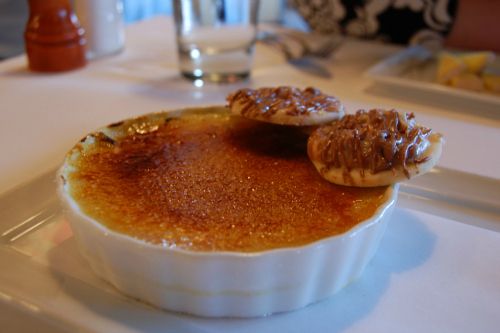
© stu_spivack
It’s rich, it’s sweet, it’s gooey and crunchy at the same time and it requires skill to make. Crème brulée is a truly French dessert.
The literal translation of this dish, ‘burnt cream’, doesn’t do justice to the finesse required to create such a truly decadent dessert. Individual servings must be delicately prepared separately, with a light fluffy vanilla custard topped with a layer of sugar.
The final flourish is to create a sweet, caramel crust atop the dish, which can be done with an industrial blowtorch or with a theatrical table-side flambée.
Crème brulée is the brainchild of legendary French chef François Massialot, whose 1691 cookbook also contains the first meringue recipe. Having served up dishes to Louis XIV, Massialot unashamedly billed himself as ‘a cook who dares to qualify himself royal’.
Undoubtedly a king of the kitchen, his recipe books were still in common usage 200 years later and his signature dish still whets appetites today.
Did we miss any iconic desserts? What’s your favourite local sweet delicacy? Let us know in the comments!
Article by Andy Scofield, International Features Writer

